




























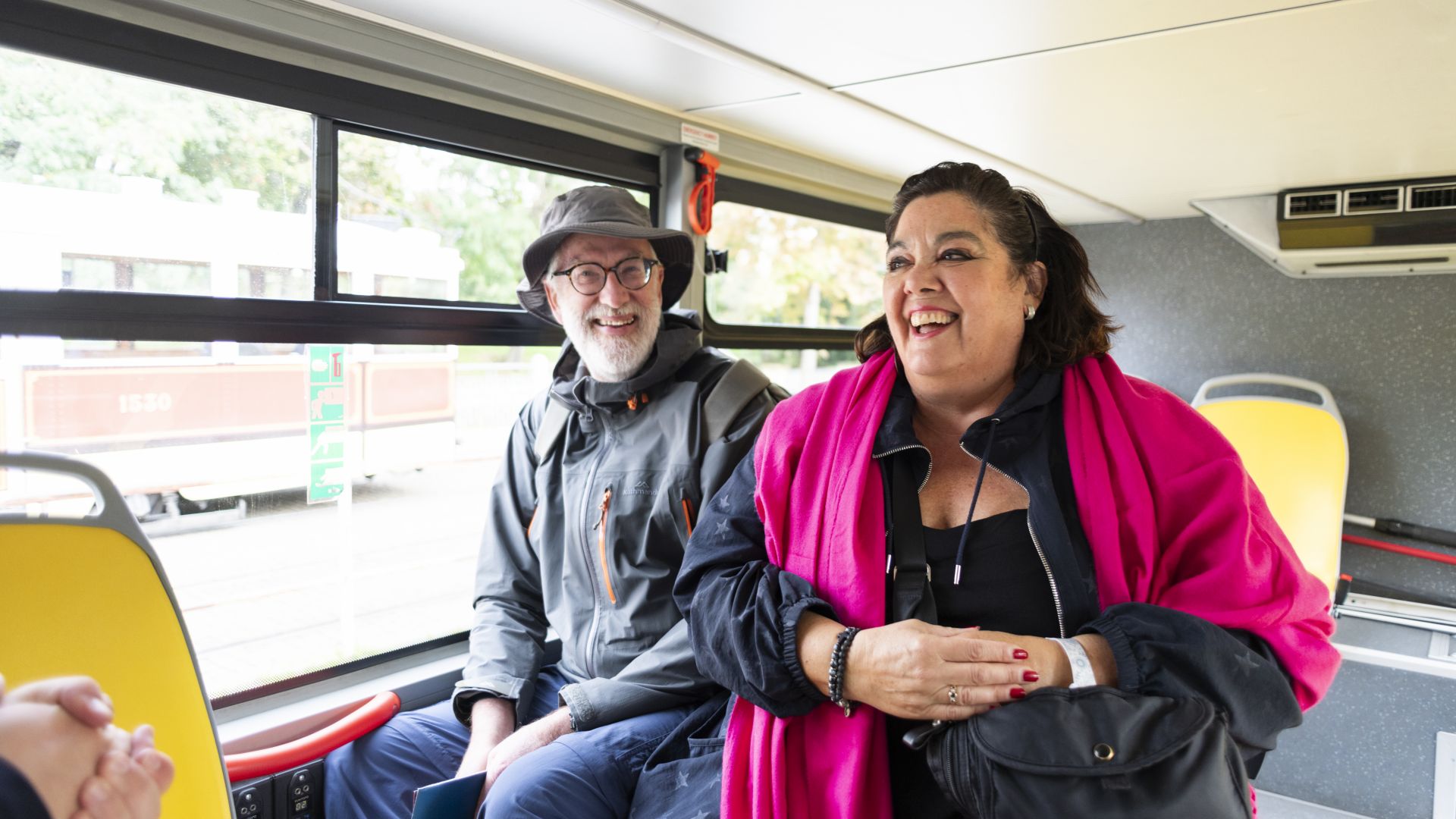
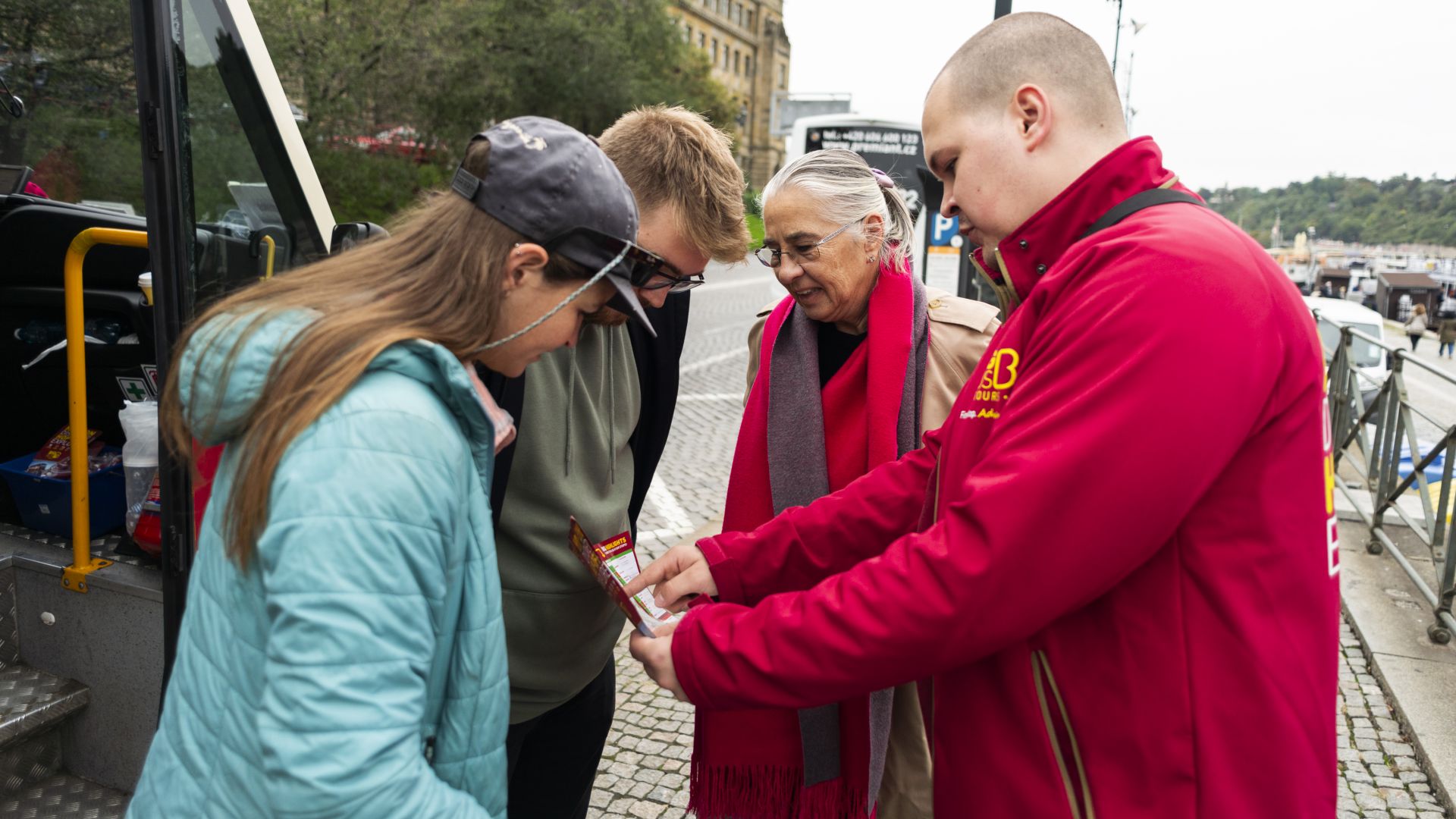
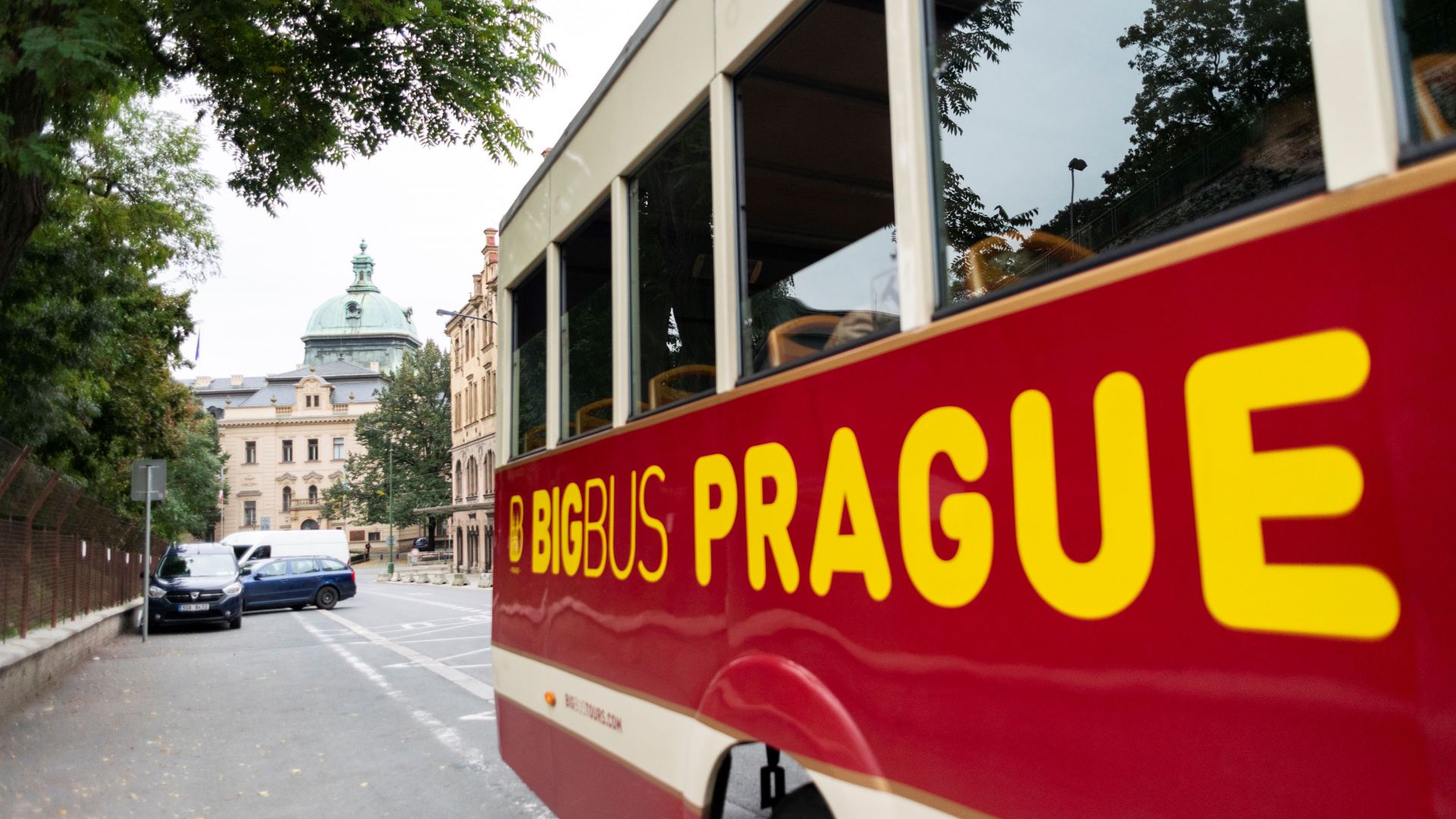
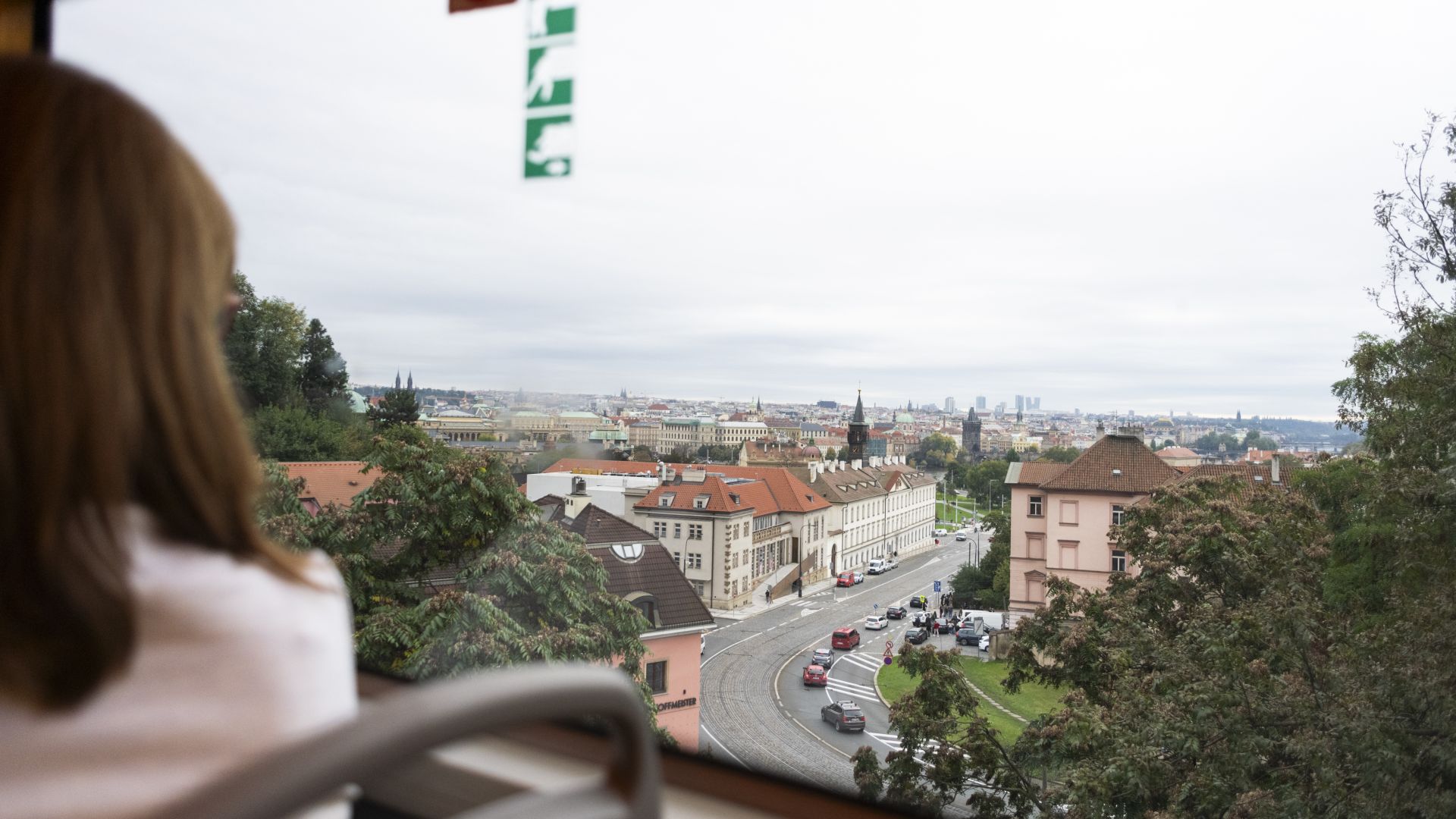
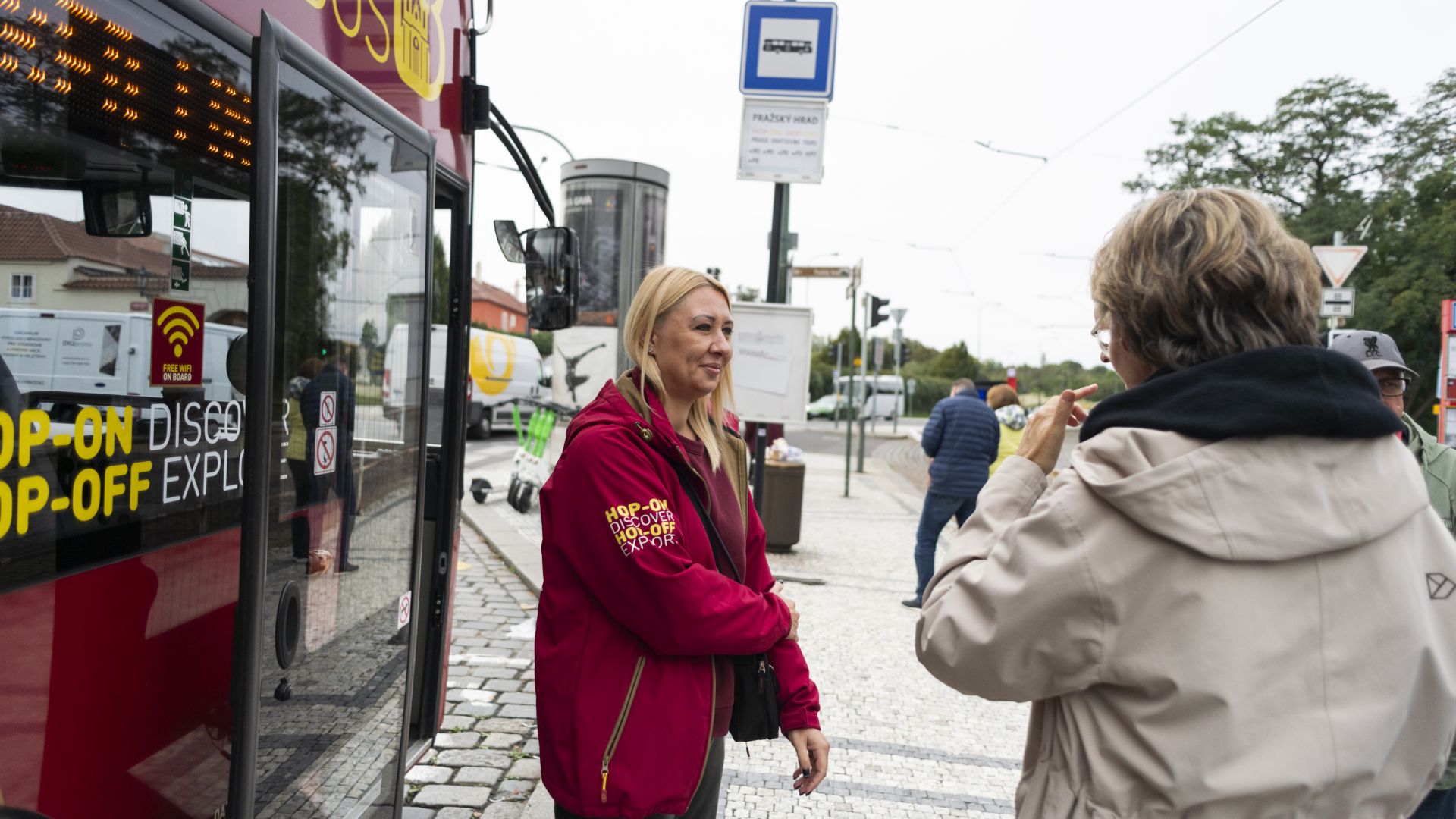

Discover the best of Prague at your own pace with the Hop-On Hop-Off bus, whether it’s your first time in Prague or you’ve been here before, this choice is always ideal. This flexible tour allows you to discover iconic sights in Prague, such as Prague Castle, Charles Bridge, Old Town Square with the Astronomical Clock, and the Dancing House, while enjoying the comfort of a sightseeing bus. During the ride, you can listen to an audio guide in 24 languages that will give you an insight into the history, architecture, and attractions of these places.
Thanks to the hop-on hop-off option, you can tailor the route to suit you – stop at the most interesting places in Prague, stroll through the historic streets of the Old Town, or enjoy the atmosphere of the city’s more modern areas. The combined route includes not only the most famous landmarks but also lesser-known spots that are well worth discovering.
The Big Bus Hop-On Hop-Off service offers open-top buses as well as the world-famous double-decker buses. Two routes are available (green route and red route). The double-decker bus will take you on the red route. There is an assistant on board the bus throughout the journey to help you with everything.

Wenceslas Square is one of the busiest and most important arteries of modern Prague, connecting the historical and commercial heart of the city. Its dominant feature is the National Museum with the equestrian statue of St. Wenceslas, which commemorates important milestones in Czech history. A wide range of restaurants, shops and cultural events give this place an unforgettable atmosphere.
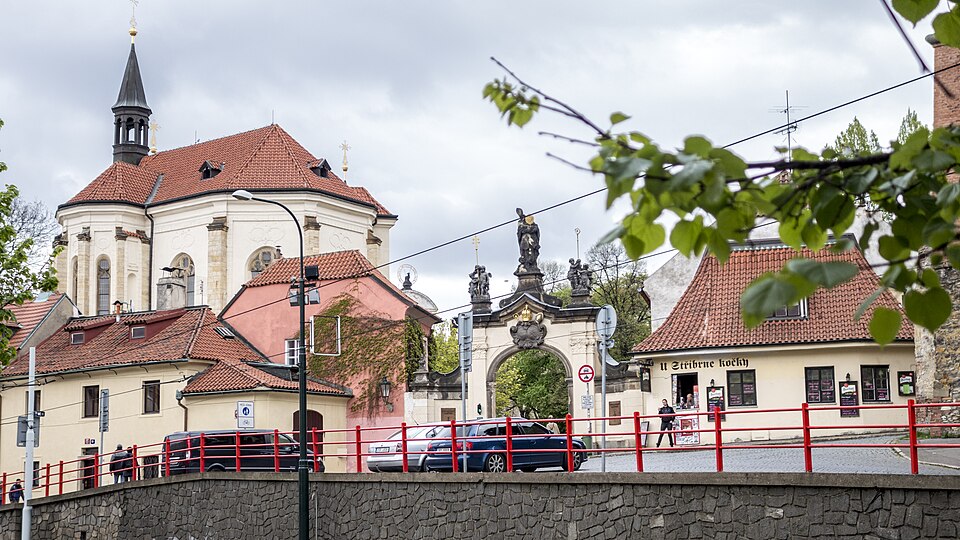
Strahov Monastery, the oldest premonstratensian monastery in Bohemia, was founded in the twelfth century by the monks, who came from Westphalian Steinfield. At the time of communism, the monastery was closed, and the monks were expelled. In the nineties of the last century, the monastery was restored and renovated. The monastery grounds include the Romanesque Basilica, the Church of the Assumption of the Virgin Mary with a chapel dedicated to Saint Norbert. There is also the most valuable and preserved historical library in Czechia, with over two hundred thousand books and among them three thousand incunabula. The library consists of two halls, the Theological and the Philosophical, both decorated with baroque frescoes. Another part of the monastery consists of the Picture Gallery built in the eighteenth century. In the courtyard, you can visit the monastic brewery with a restaurant from the seventeenth century and taste the local beer made of only natural raw materials. Currently, seventy-five monks belong to the Premonstratensian monastery of Strahov Monastery, living there or in the parish offices all over the Czech Republic.

The gothic Jindřišská Tower was construct as an individual tower. It served as a military guardhouse in the seventeenth century, and it was damaged by the Swedish army during the Thirty Year War. It was reconstructed in the gothic style at the end of the nineteenth century. After a quite extensive modern reconstruction, the tower has been equipped with the air-conditioning and the high-speed elevator covering ten floors. The restaurant with a stunning view of the city is situated in the upper part of the Tower.

Main railway line was put into operation in eighteen seventy-one as the Emperor Franz Josef Station. The Main Station building was designed and built in Art Nouveau style by Josef Fanta, a prominent Czech architect, whose name is given to the famous Fanta's Café inside the hall. Unfortunately, in terms of public attention, the inauguration of the railway route from Vienna to Prague was not very successful, as only nine passengers used the line on the first day of its operation. The Central Station is the biggest domestic and international railway junction.
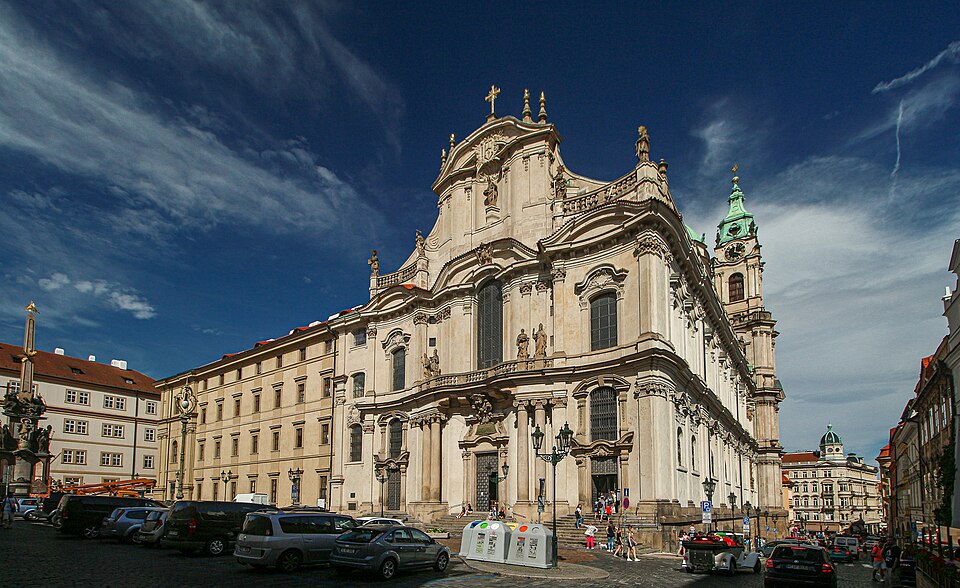
The Lesser Town Square consists of a connected row of town's houses. The Church of Saint Nicholas connected with the former Jesuit school is situated at the centre. Nowadays, the building is used by the Faculty of Mathematics and Physics of the Charles University. The street leading up is Nerudova Street, known for its rich variety of house signs, connecting The Lesser Town and Hradčany. If you follow the street, you can easily get right to the Prague Castle. On the right side, there are two palaces, now housing the Faculties of The Academy of Performing Arts. There is the Plague Column of the Holy Trinity from the eighteenth century in front of The Church of Saint Nicholas. The arcades on the right are filled with several restaurants and cafés. The Charles bridge is just a few steps from the lower part of the Square.
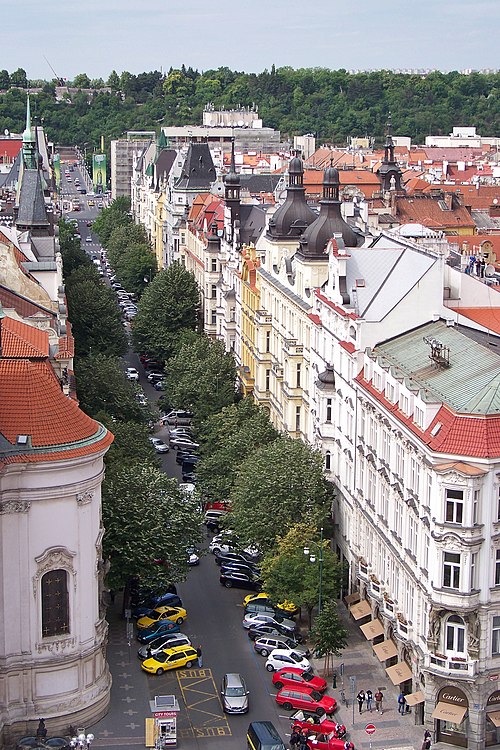
Nodern elegant street with many boutiques of world-famous brands came into existence after the redevelopment of the original Jewish ghetto at the beginning of the twentieth century. The redevelopment was necessary for many reasons. The main reason was the displacement of Jewish families to the different parts of Prague and also to Germany and France, because the Jews gained their civil rights and freedom at the end of the nineteenth century. The unsuitable hygienic conditions of the former ghetto such as the absence of sewerage or abandoned houses were attracting scum and criminals, so the city decided to tear the houses down. Only five original synagogues and the cemetery remained. The surroundings were filled with beautiful neoclassical apartment buildings, and they have been considered the most expensive ones in Prague.
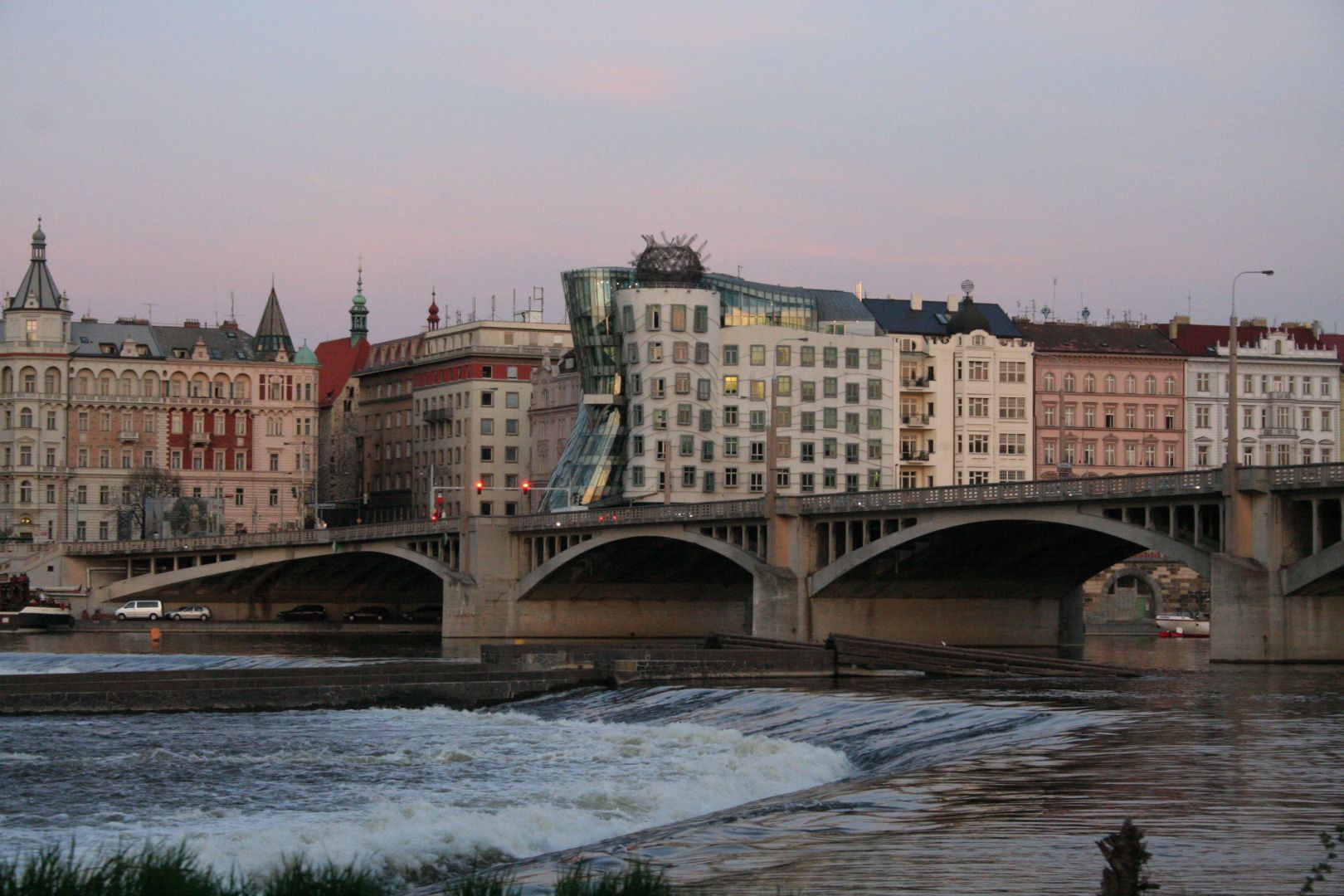
Situated on the right, the Dancing House, built in nineteen ninety six, stands as a perfect example of modern architecture. The former building was destroyed in an unintentional airborne attack by the allies during the Second World War. The daring architect Vlado Milunić and the world-famous architect Frank Gehry proposed to build on the long-term empty site the Dancing House, also known as Ginger and Fred. Many inhabitants of Prague were quite surprised by putting the modern building into the historical Prague. Till this day The Dancing House has had many admirers and also dissenters. The name was given to it thanks to its spires which resemble the world-famous dancers Ginger Rogers and Fred Astaire. The building is very atypical, and you will not find any right angle in the whole construction. All the components were custom-made. The location of windows suggests the wave motion in the Vltava river. The dynamism of spires symbolizes the transformation of numb Czechoslovakian society into the dynamic and democratic one.
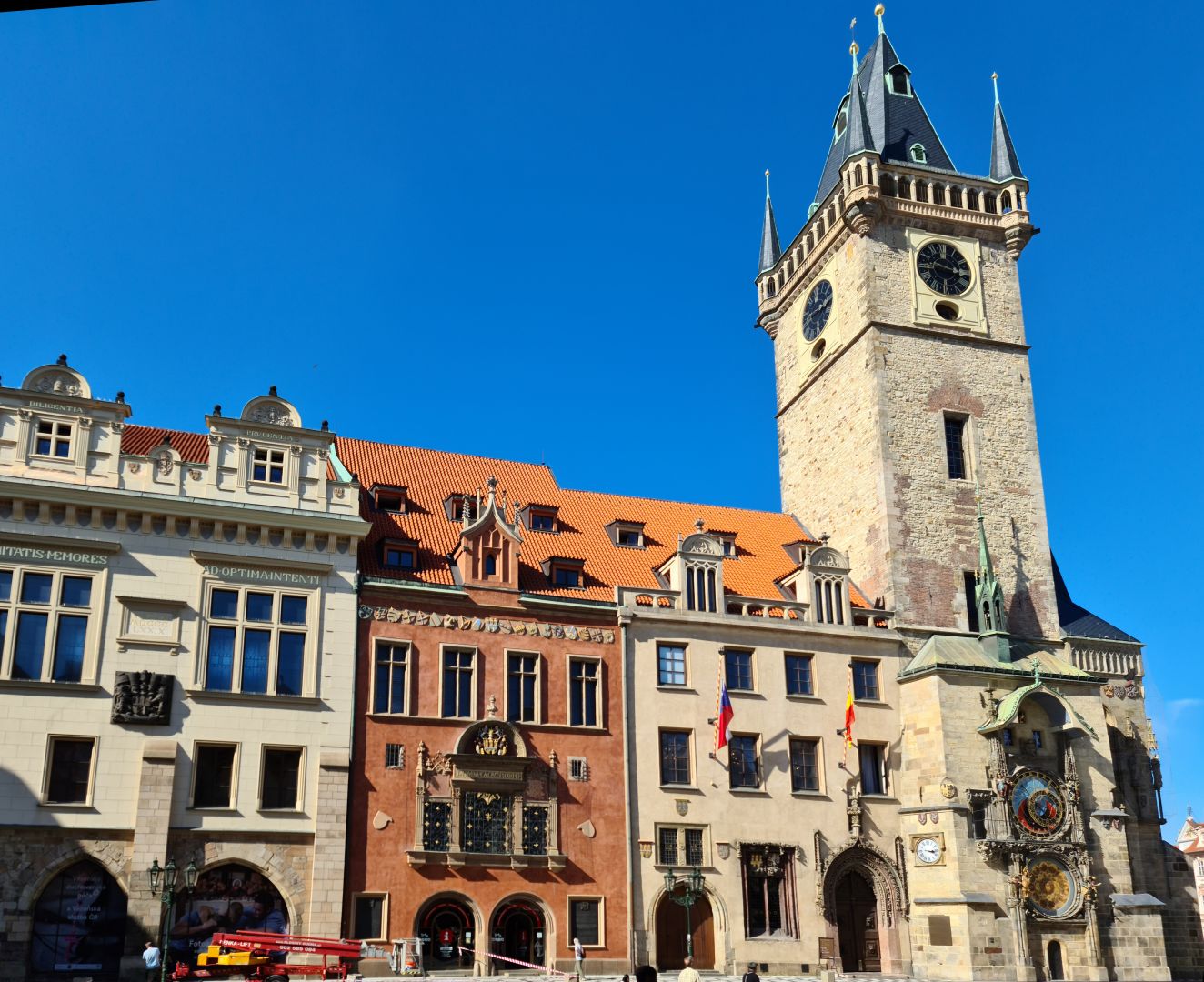
The Old Town Hall is an imposing Gothic building that dominates Old Town Square. Over the centuries, it has witnessed many key events in the history of Prague and the Czech Republic. Its ornate façade, historic interiors, and observation tower attract visitors from all over the world.
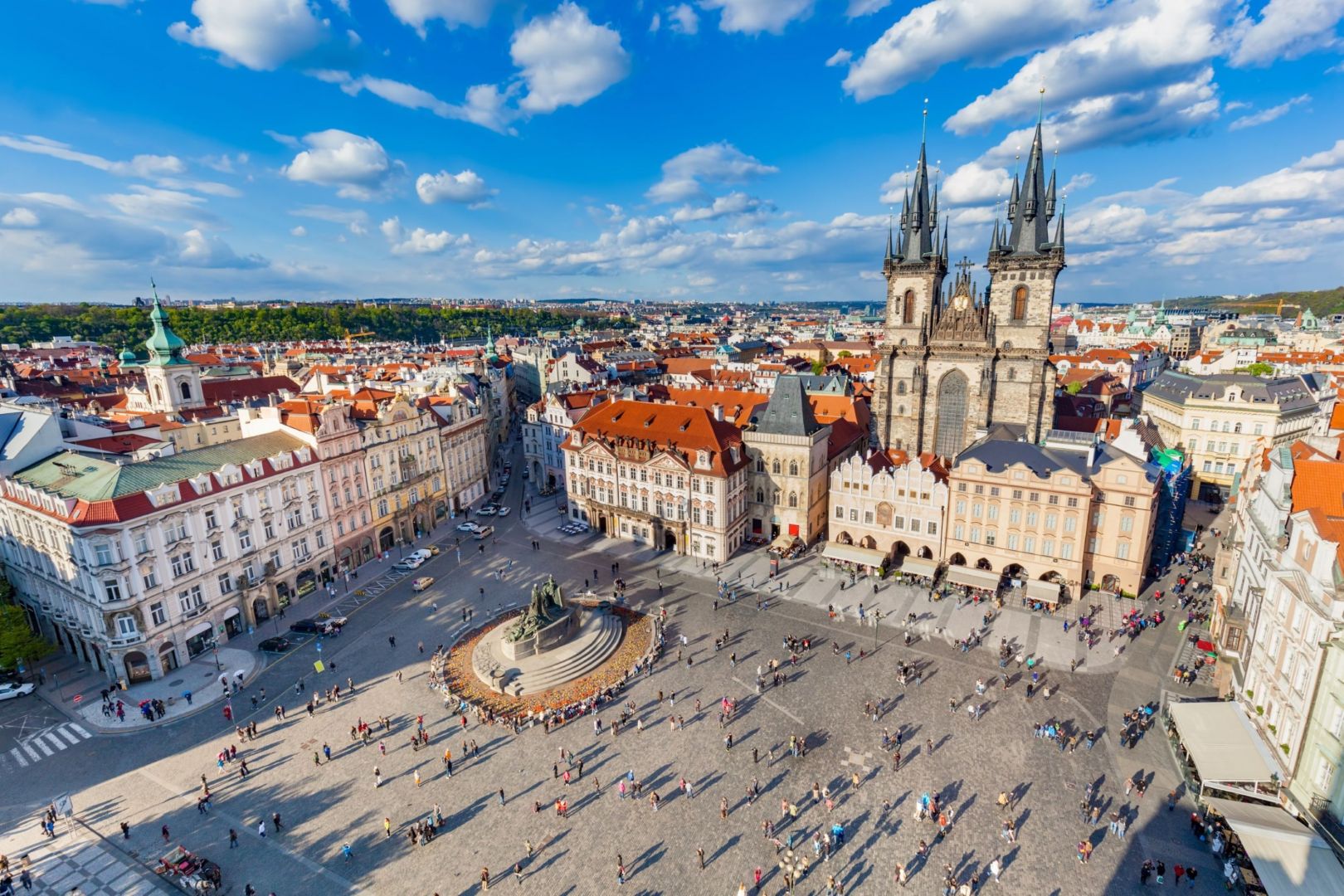
The Church of Our Lady before Týn, often referred to as Týn Church, is the iconic Gothic landmark of Old Town Square. Its slender towers hide a rich history and mysterious stories that reflect the unique atmosphere of Prague’s center. You will learn about the fascinating past of this majestic building and the secrets it holds.
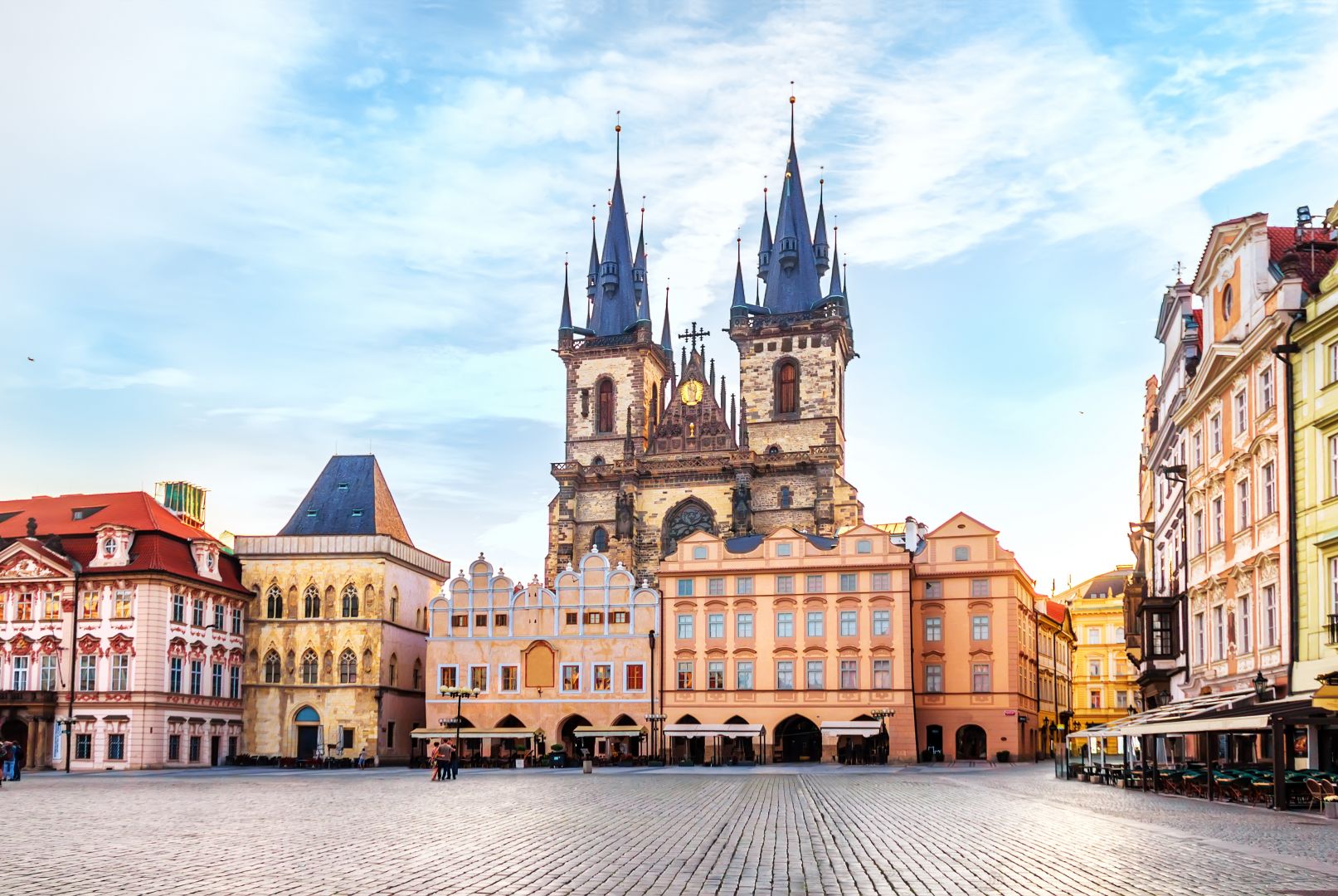
The Old Town Square is the heart of historic Prague, where diverse architectural styles blend together — from Gothic to Rococo. During your visit, you can admire the Prague Astronomical Clock, the Marian Column, the Church of Our Lady before Týn, the Old Town Hall, the Baroque Church of St. Nicholas, the Rococo Kinsky Palace, and the House at the Stone Bell. The dominant feature of the square is the monument to Master Jan Hus, which commemorates the spiritual and historical roots of the Czech nation.
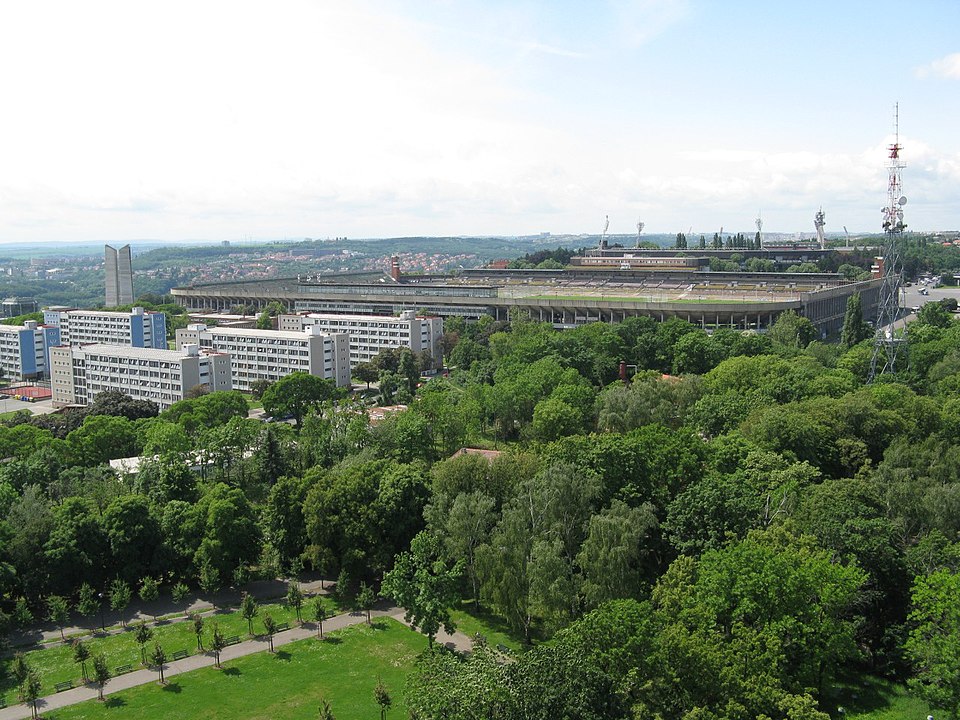
Part of Prague Petřín Hill is called Strahov, where the Petřín Lookout Tower and an extensive park with an astronomical observatory can be found together with the hall of residence and the sport stadiums. The Great Strahov Stadium is marked as the largest in the world. It was built in nineteen thirty-five and was used as a place for public sport performances in the past. Covering the area of sixty-three thousand square metres, it can fit nine football fields, and has a capacity of two hundred and fifty thousand seats, fifty-six thousand of which are for seating. An anti-war assembly took place here at the beginning of the Second World War. . In nineteen thirty nine a military parade was held here to celebrate Adolf Hitler's fiftieth birthday. It also served as the gathering place for the Jews before their deportation to the concentration camps. At the end of the war, the stadium served as an internment point for the Germans, who were waiting for their transportation from Bohemia. A university assembly against the new communist regime took place in nineteen forty-eight. After that, the Sokol Sports Education Association was dissolved and restored after the Velvet revolution. Spartakiads were held at the stadium every five years for a long time. It was an organised sports exercise for all ages. These mass performances served as a propaganda action of the socialist regime and in terms of their scale, there was not an event that could be compared with them anywhere in the world. The exercisers were making various patterns by their movements, while the music was playing. On average, almost two million people participated in those exercises on every Spartakiad. The last one was supposed to be in nineteen ninety, but the tradition was discontinued by the Velvet revolution and the collapse of the communist regime. Right after the revolution, the stadium was used as a place for concerts of artists such as the Rolling Stones, attended by hundred thousand visitors, including the former president Václav Havel. Other bands performing there are for example U2, Aerosmith, Pink Floyd, AC/DC or Bon Jovi. At the moment, the stadium is used as a training place for the football club AC Sparta Praha. However, the whole building has been falling into disrepair. The city is planning to build a permanent exposition for the Museum of 20th Century Memory. Next to the stadium, there are exhale valves of the Strahov Car Tunnel, which is placed at the hill under the stadium.
An unforgettable experience with Premiant City Tour






